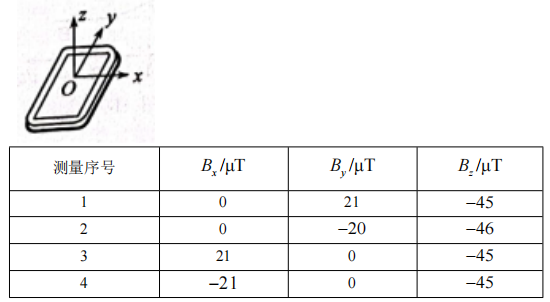Young children across the globe enjoy playing games of hide and seek. For them, there's something highly exciting about 41 someone else's glance and making oneself unable to be
seen.
However, we all witness that preschool children are remarkably 42 at hiding. They often cover only their eyes with their hands, leaving the rest of their bodies 43 .
For a long time, this ineffective hiding method was 44 as evidence that children are hopelessly "egocentric"(自我中心的)creatures. But our 45 research results in child
developmental psychology 46 that idea.
We brought young children aged 2-4 into our Minds in Development Lab at USC. Each 47 sat down with an adult who covered her own eyes or 48 . We then asked the child if
she could 49 or hear the adult. Surprisingly, children replied that they couldn't. The same 50 happened when the adult covered her own mouth: 51 children said that they couldn't 52 to her.
A number of 53 ruled out that the children misunderstood what they were being asked.The results were clear: Our young subjects 54 the questions and knew 55 what was
asked of them. Their 56 to the questions reflected their true 57 that "I can see you only if you can see me, too." They simply 58 mutual(相互的)recognition and regard.
Our 59 suggest when a child "hides" by putting a blanket over her head, it is not a result of egocentrism. In fact, children consider this method 60 when others use it.
41. A. following B. taking C. escaping D. directing
42. A. clever B. bad C. scared D. quick
43. A. exposed B. examined C. untouched D. imbalanced
44. A. supported B. guaranteed C. imagined D. interpreted
45. A. disappointing B. mixed C. surprising D. desired
46. A. explained B. confirmed C. contradicted D. tested
47. A. parent B. child C. researcher D. doctor
48. A. feet B. nose C. hands D. ears
49. A. see B. help C. reach D. fool
50. A. event B. thing C. action D. accident
51. A. Yet B. Now C. Soon D. Once
52. A. speak B. listen C. tum D. wave
53. A. instructions B. descriptions C. experiments D.assumptions
54. A. comprehended B. predicted C. explored D. ignored
55. A. partly B. honestly C. vaguely D. exactly
56. A. responses B. approaches C. contribution D.sensitivity
57. A. ability B. belief C. identity D. purpose
58. A. hold back B. relate to C. insist on D. make up
59. A. limitations B. requirements C. theories D. findings
60. A. tentative B. impressive C. creative D.effective
CBADC
CBDAB
BACAD
ABCDD
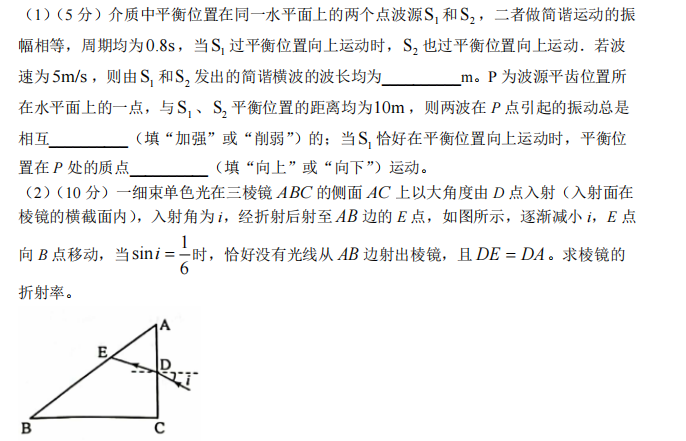
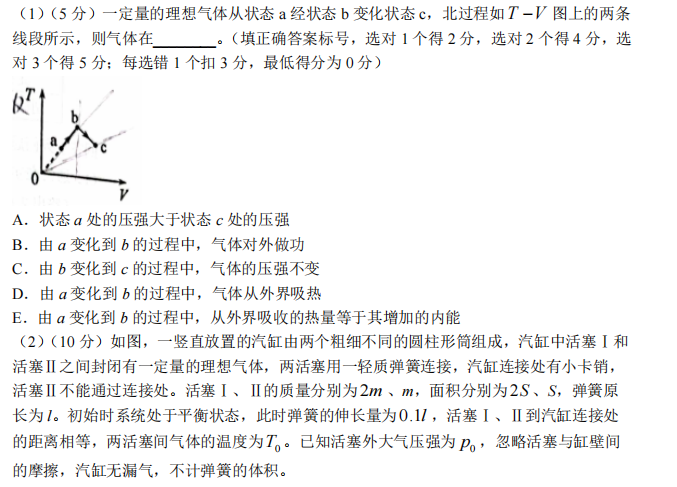
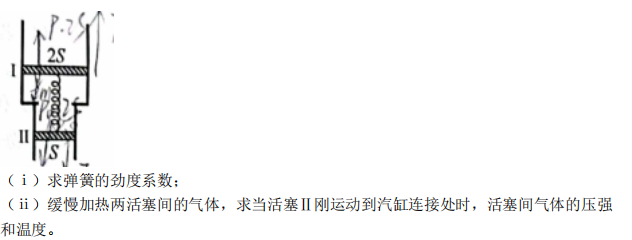

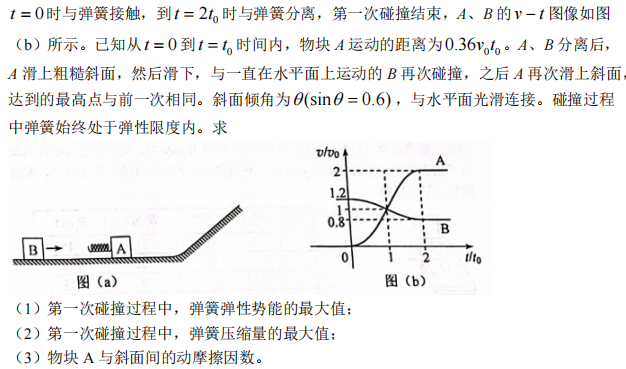
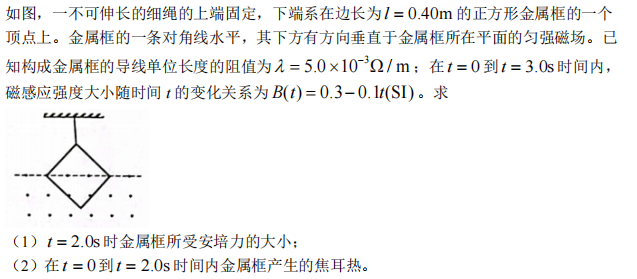
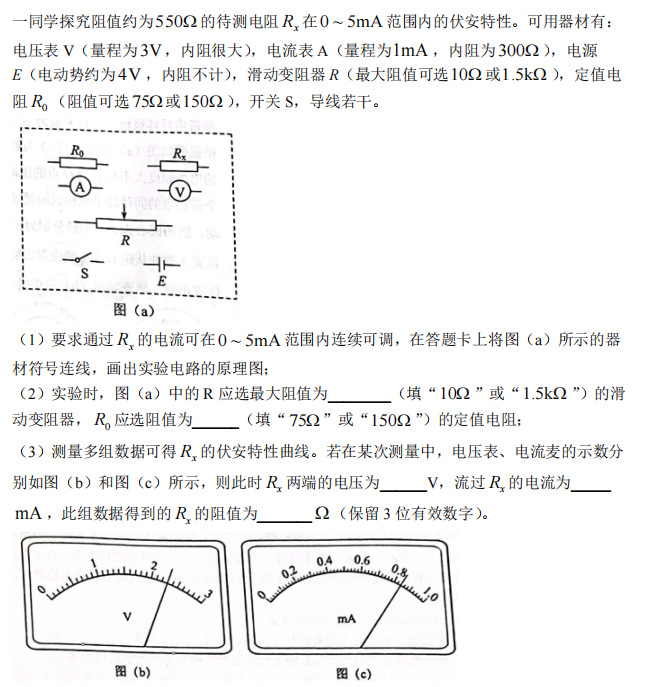
用雷达探测一高速飞行器的位置。从某时刻(t=0)开始的一段时间内,该飞行器可视为沿直线运动,每隔1s 5 测量一次其位置,坐标为 x,结果如下表所示:

一种可用于卫星上的带电粒子探测装置,由两个同轴的半圆柱形带电导体极板(半径分别为 R 和 )和探测器组成,其横截面如图(a)所示,点 O 为圆心。在截面内, R+d极板间各点的电场强度大小与其到 O 点的距离成反比,方向指向 O 点。4 个带正电的同种粒子从极板间通过,到达探测器。不计重力。粒子 1、2 做圆周运动,圆的圆心为 O、半径r1、r2(R<r1<r2<R+d);粒子 3 从距 O 点r2的位置入射并从距 O 点r1的位置出射,粒子4从距O点r1的位置入射并从距O的r2的位置出射,轨迹如图(b)中虚线所示。则()
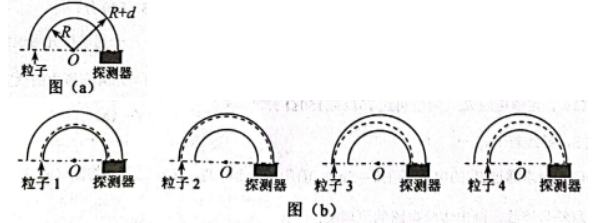
质量为1kg 的物块在水平力 F 的作用下由静止开始在水平地面上做直线运动,F 与时间 t 的关系如图所示.已知物块与地面间的动摩擦因数为 0.2,重力加速度大小取g=10m/s2。则()

如图,两对等量异号点电荷+q、-q(q>0)固定于正方形的 4 个项点上。L、N 是该正方形两条对角线与其内切圆的交点,O 为内切圆的圆心,M 为切点。则( )
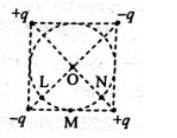
安装适当的软件后,利用智能手机中的磁传感器可以测量磁感应强度 B。如图,在手机上建立直角坐标系,手机显示屏所在平面为 xOy 面。某同学在某地对地磁场进行了四次测量,每次测量时 y 轴指向不同方向而 z 轴正向保持竖直向上。根据表中测量结果可推知()
